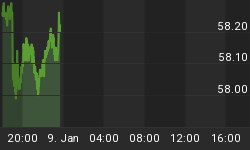In 2010 Korea and the United States reflect two very different economic situations. While the U.S. Federal Reserve and a number of prominent economists such as A. Gary Shilling are concerned about deflation partially due to the ongoing and possibly deepening slump in the housing market. Korea on the other hand has the opposite problem. In the U.S. deflation is a worry; in Korea the problem is inflation.
The U.S. economic recovery has been sub-par with real GDP for 2010 expected around 2.0%. It is also dogged by high structural unemployment, a deterioration in fiscal management and a lack of credit, especially for small and medium-sized businesses. This has left the U.S. central bank ready to pursue "QE2" an acronym to describe Quantitative Easing 2, in which the Fed will buy U.S. Treasury bonds and/or other assets to pump liquidity into the economy.
This concern over deflation was evident in comments by Federal Reserve Chairman Ben Bernanke, who observed on October 15 "Consumer spending has been inhibited by the painfully slow recovery in the labor market" and "with long-run inflation expectations stable and with substantial resource slack continuing to restrain costs pressures, it seems likely that inflation trends will remain subdued for some time." This concern is because the U.S. economic recovery has moderated in the face of debt and continuing uncertainty as the American economy moves out of the Great Recession, but struggles to maintain positive momentum.
In contrast, Korea's bounce back from the Great Recession has been strong. Real GDP was a dismal 0.2% in 2009 (-2.6% for the U.S.), but is forecast by the International Monetary Fund (IMF) to climb to 6.1% this year. Credit has been flowing and exports have been robust. This functions as a key factor in the recovery. One of the offshoots of this has been that Korea is concerned about rising inflationary pressures, which have become evident in food prices. Kimchi, the fiery national dish, has seen considerable price increases and become the focus of the local media, with one newspaper editorial calling it "a national tragedy."
The IMF registered consumer price increases in Korea at 2.9% in 2009, but forecasts they will rise to 3.1% for 2010. In fact, current data is running higher than this forecast and will probably end the year above the IMF forecast, with a further increase of 3.4% forecast for 2011. Under normal circumstances the right prudent policy would be to raises interest rates. However, the Bank of Korea is also concerned about maintaining Korea's export competitiveness, which partially depends on the value of the won, its national currency. As a result, on October 14th the Bank of Korea left the seven-day repurchase rate unchanged for the third month in a row at 2.25%, leaving borrowing costs still at very low levels.
Korea's economic policymakers have a difficult balancing act. The government wants to maintain a healthy pace of growth, but inflationary pressures are mounting and low lending rates do not help that picture. At the same time, Korean policy makers are worried about the won's appreciation. The won's 8% leap against the U.S. dollar in the past three months represents a challenge to further export expansion. But the situation is even more complicated as Korea's interventions in keeping the won at a lower level are causing Japanese electric and auto companies to put their government under pressure to do something to check the yen's appreciation against the won. A recent note from J.P.Morgan on foreign currency strategy observed "Japanese corporations need a weaker Japanese yen against non-U.S. dollar currencies, especially Asian currencies." Korea certainly sits in the Japanese bundle of worries.
The combination of rising inflation, growing public disgruntlement over higher food prices, and trade concerns has left the Bank of Korea and the government attempting to steer a path between a strong currency and low interest rates, with the goal of cooling some of the inflationary pressures hitting the Korean consumer without stalling economic growth. This also complicates Korea's international relations, especially in an environment of growing protectionist pressures. Fortunately unemployment is set to fall from 2009's 3.7% to 3.3% this year, giving policymakers a little room, while growth will remain a little over 4.0% next year. This is hardly a slip back into sub-par expansion. Mr. Bernanke no doubt would envy this type of challenge.
The foreign fighter phenomenon adds another challenge to the already complex situation just beyond Afghanistan's borders. The cooperation of our ally, Pakistan, with the Taliban has been an ongoing issue. Focusing on the perceived threat of India exerting a controlling influence over the Karzai government, Pakistan's intelligence agency supported the Taliban for years and cooperation with American forces is only now beginning to improve. Large numbers of foreign fighters have entered Afghanistan through Pakistan, unhindered by the Pakistani government.
















